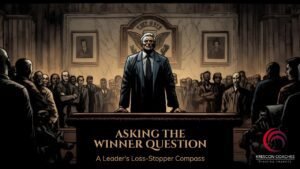Kimmy: “A female dog? The thing that makes puppies? Nice compliment.”
When Xanthippe uses some colorful language against Kimmy like the ‘B’ word, Kimmy turns it into a compliment, frustrating Xanthippe. Her reference to the B-word only shows how Kimmy loves and respects female dogs as they give birth to cute puppies. She indeed takes it as a compliment even though the context Xanthippe was using was completely different.
Unbreakable Kimmy Schmidt is a comedy-driven true-to-life American series. It’s about Kimmy Schmidt who was abducted along with three other women by a cult-obsessed reverend. He led them to believe that the world was coming to an end due to a nuclear apocalypse. The only safe place was the underground bunker.
For 15 years, these women lived underground until they were finally located and rescued by the FBI.
Male Reporter (During an interview in a TV News Program): “Cyndee, you were the first young woman forced into this cult.”
Cyndee (First Cult Survivor before Kimmy): “Yes, I had waited on Reverend Richard a bunch of times at a York Steak House I worked at, and one night he invited me out to his car to see some baby rabbits. And I didn’t want to be rude, so… here we are.”
Male Reporter: “I’m always amazed at what women will do because they’re afraid of being rude.”
It turns out that when Kimmy re-enters the world above ground, she is hopeful to see it and experience everything with full vigor.
The reason this series is called Unbreakable Kimmy Schmidt is because no matter the odds, Kimmy sails through them with an unbreakable spirit. “Just take it in ten seconds at a time. Everything will be okay.” Kimmy says to another character in the series who is afraid of a certain situation.
She always had this way of dealing with things with a certain mindset. She had already been through the worst, so suddenly every other struggle felt less of a struggle. She never got frustrated with daily matters as much as other people did. She had gratitude for the freedom she got. “It’s so funny,” she confesses, “what people who have never been kidnapped think is scary.”
True indeed when we are caught up in the dramas of our lives, we tend to lose sight of the big picture, and that is what Kimmy is here to teach us today.
Kimmy: “Changing your outside isn’t going to fix what’s wrong inside.”
Here’s the thing about Kimmy, she’s not a ball of wholesome positivity. She too has her moments of afflicted pain, mentally. Due to her 15-year trauma of abduction, she suffers night terrors and is triggered by reminders of the bunker where she was kidnapped.
But here’s a little something that people who get easily frustrated can learn from this survivor, even though fictional. We can cherish the remaining time we have in this world by not letting ourselves get carried away with frustration.
But frustration is a real emotional roller coaster. The roller coaster is also where Kimmy once found herself, literally after experiencing an emotional blackout. How does one deal with it? It’s not something you can suppress and even if you do, you can’t do that for long without driving yourself insane.
So, what does one do? How can you deal with this problem of getting frustrated, and how does your Spiritual Quotient (SiQ) help you overcome it?
The Unfair Driver
If you own a vehicle and you’ve driven long enough, you know what it’s like when a slow car is in the fast/overtaking lane speeding car from behind overtakes you or cuts you off. Road rage is an ugly outcome of frustration, especially when the other drivers around aren’t following the traffic rules.
So, let’s say a speeding car behind you has been honking non-stop, urging you to give way or drive faster. You don’t want to cross the speeding limit so you stay on your track and drive at normal speed. You try to give way but you are unable to on a narrow road. The driver behind you gets impatient and so takes a steep cut to turn around you, scaring the daylights out of you. He or she cuts through, glares at you angrily, and speeds ahead.
Now suppose you stop at a traffic signal and the car that overtook you is right in front of you.
What is your next instinct?
· Option 1 – You go and tell the driver about the inconvenience they caused for being so impatient and driving recklessly.
· Option 2 – You go and argue with the driver mercilessly until he apologizes.
· Option 3 – You let it go because you can’t be bothered with engaging in a meaningless argument.
· Option 4 – You get frustrated and start giving out loud slurs in your car with the windows closed.
· Option 5 – You take a deep breath, let out the angst inside you, and listen to soothing music on the radio.
Which of the above options would you choose?
There’s no right or wrong because it’s entirely up to you. It also depends on the situation, your thought process, and your point of view, among other contributing factors. They’re just choices and how you wish to let your emotions drive you in this situation. Hopefully, you make a choice where the situation does not control you.
However, what if I said, you may have a roadmap to dealing with this and similarly other frustrating situations? Let’s try and explore these three strategies to understand how to manage frustration the next time you experience it.
Ø INTENT-DRIVEN ACTION
Ø WINNER
Ø COMPASSION
Ø INTENT-DRIVEN ACTION
Firstly, any action should be intent-driven. Intent-driven action is where you initially take a moment to understand the intent behind the action you want to take. Let’s say, you choose option 1 or 2, which is to step out of your car and go fight with the driver ahead of you. Why did you want to fight? What was the true reason behind it?
You don’t know the outcome of this argument, but at that moment you are frustrated to the point of not caring about the result. Incidentally, we never have control over the result but just on our actions. The actions themselves have the maximum probability of being effective when they are intent-driven. Therefore, the action you take should not be just any action, instead should be an Intent-Driven Action. This is the only thing that is in your control, your Intent-Driven Action.
Also, do you want to partake in a moment of extreme anger or have a simple conversation to create a resolution? This brings me to my next strategy…
Ø W.I.N.N.E.R.
WINNER stands for Willing to Invest Now or Not to Engage and Respond. The concept of the WINNER is about answering a question. Do you want to get out of your car and fight with that driver? Is that argument going to be worth your time, effort, and energy?
Time, Effort, and Energy – Three finite resources given to us. Time is limited, and so is an individual’s effort, and indeed energy. I guess these three resources are limited for a reason. If we had infinite sources of time, energy, and effort, maybe we would not appreciate these assets in our lives and instead choose to partake in every unimaginable situation.
Now, unlike the driver’s situation, several other circumstances demand our involvement even though we don’t want to be a part of it. So, this brings us to a total of three options.
A – Do not hesitate to say NO: If you don’t want to be a part of a certain situation or event, you can choose to decline or deny your involvement. You have the right to say NO. It’s not worthy of your Time, Energy, and Effort. Ask yourself whether you are willing to invest in a specific situation. You may be driven to it but once you invest in it, you become committed to it. Remember that it is fine and acceptable to step back from situations that you do not want to be a part of where your time, energy, and effort are not needed.
B – Get out of it if you had taken part before: If you become a part of a bad investment, and you realize it late, you can withdraw your involvement from it. Just because you were part of something you thought was good at first is not good at all, does not mean that you have to continue there. Get out while you can! Don’t spend your Time, Energy, and Effort on it any more than you have already.
C – Regulate your time and quantum of investment: When you invest (commit) yourself, you still have control over the duration and quantum of the investment. In conclusion, don’t spend too much of your time, energy, and effort which you think are unwanted but unavoidable events.
Ø COMPASSION
Consider the following – most organizations have a Quality Control (QC) department who are entrusted with ensuring that a particular product meets the specified quality. The management pays a good amount to maintain the QC department. Now imagine if you can get the whole QC department for yourself, free of cost. The people who frustrate you are like the QC resources checking on the level of your Compassion. They help you identify your degree of compassion even for those who do not necessarily encourage a response of kindness from you, but rather provocation. However, by practicing compassion during these moments, you will be able to take a more informed and peaceful action.
Adopting any or all of the above strategies can help relieve you from the prison of frustration, more like a probation from frustration. Indeed, its claws can dig into you unless you can let it go. But by using these strategies, you can migrate from frustration and enter into a more peaceful state of mind.
Here’s a song by singer Stacie Orrico (taking a few verses) that talks clearly about being frustrated while wondering whether there is more to life:
There’s Gotta Be More To Life
I’ve got it all
But I feel so deprived
I go up, I come down, and I’m emptier inside
Tell me, what is this thing that I feel like I’m missing?
And why can’t I let it go?
There’s gotta be more to life
Than chasing down every temporary high
To satisfy me
‘Cause the more that I’m
Tripping out, thinking there must be more to life
Well, it’s life, but I’m sure
There’s gotta be more
Than wanting more
I’ve got the time and I’m wasting it slowly
Here in this moment, I’m halfway out the door
Onto the next thing, I’m searching for something that’s missing



